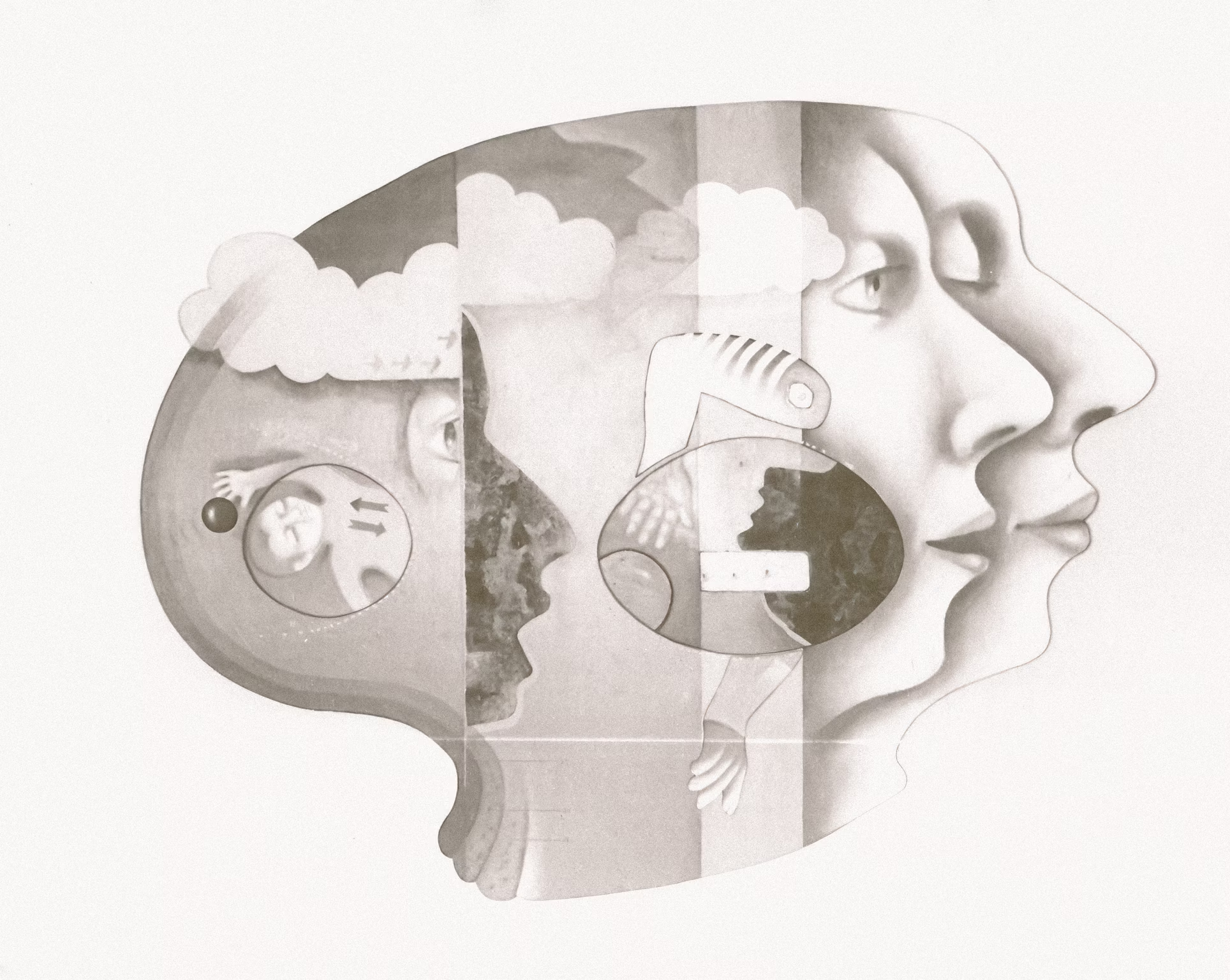At Immersive Didactics, we’ve constructed a definition for learning meant to empower educators and learners by integrating insights from education, neuroscience, psychology and entertainment. In this article, we’ll explore the definition and the underlying semantic choices that were made.
“Learning is the act of acquiring and strengthening neurological patterns that can be applied at a later time.”
Let’s take a closer look at this defintion.
The significance of the word Act

Picture by Mathias Jensen via Unsplash.com
First, let’s consider the word ‘act.’ We chose ‘act’ deliberately because it underscores the active engagement and agency we believe are crucial in effective educational settings. Learning therefore requires willpower. A commitment to act. While learning can undoubtedly occur passively or involuntarily; a fall certainly teaches caution without conscious intent, Immersive Didactics focuses on optimizing intentional learning. In the context of education, framing learning as an ‘act’ highlights the learner’s active participation, a quality consistently shown to enhance educational outcomes. Furthermore, the word ‘act’ hints at the creative performance of acting out performances that facilitate learning. The word ‘act’ then refers to willpower facilitated action and also to the performance art of teaching that asks teachers to act in a certain way to facilitate learning. Thus, while ‘process’ offers a broader umbrella term to encompass all learning, ‘act’ better reflects our commitment to empowering educators to act themselves and foster environments where learners are active and willing participants in their own growth.
Learning as acquiring Neurological Patterns
Picture by George C via Unsplash.com

Secondly, notice our focus on ‘acquiring and strengthening neurological patterns.’ This phrase is central to our brain-centric approach. We view learning as a tangible, physical process grounded in the biological reality of our neurology; the formation and reinforcement of observable neurological patterns. This means that for Immersive Didactics, concepts like ‘knowledge,’ ‘skills,’ and ‘attitudes’ are not abstract ideas but are all rooted in this same physical reality: they are specific configurations of neurological patterns. Our approach intentionally steers clear of metaphysical explanations where empirically testable, physical ones can provide clarity, aiming to demystify the learning process.
At Immersive Didactics we posit all aquiring of neurological patterns follows neccesarily from Stimuli. In a nutshell, Stimuli are signals that ‘spark’ our nervous system and brain into action. They function, in essence, as gateways to learning. We separate two types of stimuli; internal and external Stimuli. External Stimuli are stimuli that reach our nervous system through sensory stimulation. A child holding it’s hand above a flame learns quickly that fire is hot, painful and to be avoided. This engrains the pattern that fire is to be avoided into the mind of the child. Internal Stimuli are stimuli that originate from within our minds like emotions, thoughts and other subjective experiences. The same child that has a painful blister may have a thought that remembers the child to seek solace in a caregiver. If the care is given, this further engraves the function of the caregiver in the mind of the child.
Images left to right by Yaoki and Ekaterina Shakharova via Unsplash.com


In much of life, and indeed, education, internal and external stimuli are continuously interwoven and presented to us simultaneously and in quick succession. A well narrated audiobook can provide auditory sensory stimuli that trigger internal emotional stimuli facilitating further Engagement and Immersion with the audiobook. Teachers with great storytelling and classroom management skills may leverage External Stimuli by introducing concepts vividly through rehearsed presentation skills and multimedia modalities while cleverly leveraging Internal Stimuli that foster connection to the learning material, or play into students emotional states, group dynamics and psychological needs. These Stimuli ‘spark’ the act of Learning, enabling students to aquire and strengthen neurological patterns.
Learning in Time

Picture by Daniele Levis Pelusi via Unsplash.com
Third, let’s examine ‘at a later time.’ This acknowledges that learning’s impact can be immediate (short-term) or enduring (long-term). Within the Immersive Didactics framework, we posit that long-term learning is facilitated when these neurological patterns are deeply ‘engraved’ or, more technically, when their synaptic connections are strengthened. This strengthening increases the likelihood of successful application in the future. This perspective aligns well with established neuro-scientific phenomena such as Long-Term Potentiation (LTP), where repeated stimulation fortifies neural pathways, providing a biological basis for how experiences can translate into lasting learning.
Our definition of Learning is meant to benefit educators, not academically describe the physical process of learning in a formal sense.
Lastly, please note that our definition of Learning is meant to reflect the phenomenon of learning within education whilst empowering educators by position learning as an active process that involves agency and can be fostered over time. We do not necessarily believe this agency to be ‘real’ in a physical sense. A more formalistic, reduced and scientific definition of learning aligned to our own brain-centric perspective may be:
‘Learning is the formation of neurological patterns.’
This defintion also encapsulates all of the above, yet is more reduced and therefore insinuates less agency and active involved by educators and learners. For the purpose of understanding Immersive Didactics, both defintions can be used.
What lies opposite of learning?
At Immersive Didactics, we believe one of the strengths of our definition of learning is that is also encapsulates what we can study in society as the opposite of learning, or ‘un-learning’.
‘Un-learning is the degradation of neurological patterns.’
Sadly, most of us who reach a certain age get to experience the devastating effects of Alzheimers, Parkinsons or other neuro-degenerative diseases, which are essentially all diseases that target the central nervous system in a destructive manner. Almost all of us get to experience second hand, or woefully even firsthand, the terrible loss of dignity and humanity associated with these diseases. We see people inflicted with these diseases lose their ‘spark’ before our very own eyes and ultimately die an unrecognizable shell of who ’they’ used to be. As humans, we collectively experience these neuro-degenerative diseases as one of the most terrible faiths that can befall a person. Let’s view learning for what it is in the physical sense and celebrate it. Learning is indeed much more than just neurons firing, it is a large part of what makes us truly human. If this message resonates with you, please consider donating to a neuro-degenerative disease charity.
Now that we looked a bit more closely at our ‘brain centric’ definition of learning, please bear in mind that while our brain-centric perspective on learning certainly has benefits, it also has inherent limitations. We simply do not know and can not give definitive answers on how our posited view of learning works in biological reality. There is no unified empirical theory of cognition and learning, and we may not even be asking the right questions. Modern neuroscience and educational science are still very much in the process of trying to establish falsifiable and empirical theories of cognition and learning. Nevertheless, this limitation of not having hard empirical evidence for a unified theory of learning is also present in every other perspective on learning. At Immersive Didactics, our goal is to synthesize contemporary theory and evidence from multiple disciplines. We aim to offer educators an understandable, interdisciplinary, and evidence-informed perspective on learning; one that empowers educators to make more effective decisions in their daily professional practice, even as the science continues to evolve.
How may Learning work? Neuroscientific Theories of Consciousness and Learning.
As mentioned before, we intentionally hold to a fairly ‘brain-centric’ definition of learning at Immersive Didactics. This allows us to draw theoretical parralels to the biological reality of neuroscience and to theoretical neuroscientific models of consciousness. At Immersive Didactics, we integrate insights from four major consciousness theories in neuroscience to help explain the how of Learning. This offers us some striking parralels between contemporary insights and theory from the world of neuroscience and theory as well as empirical evidence in the world of educational sciences. The major neuroscientific theories of consciousness we’ve integrated into Immersive Didactics are:
(1) Global Workspace Theory: which views consciousness as a network that links unconsciousness processes and conscious processes via a global workspace and a limited spotlight of attention.
(2) Predictive Processing: which views the brain as a prediction machine aimed at minimising prediction error.
(3) Information Integration Theory: which views consciousness as the result of integrated information, the more integrated information becomes the more conscioussness emerges.
(4) Higher Order Thinking: which views metacognition (thinking about thinking, reflection, awareness of the self and limitations of the self) as key drivers of consciousness.
The above mentioned theories are key to understand our theoretical model for learning, which we titled ‘The Immersive Didactics Theater of the Mind‘.
Introducing The Immersive Didactics Theater of the Mind.
Under construction!
At Immersive Didactics, we like to view Learning and our subjective cognitive experience through a unique storied metaphor and theoretical model which we call ‘The Immersive Didactics Theater of the Mind’. Inspiration for this metaphor came from the popular radio term ’theather of the mind’ and the work by Baars on Global Workspace Theory and his stageplay metaphor for consciousness.
Picture by Wiki Sinaloa via Unsplash.com

To understand how learning works—how we transform fleeting experiences into lasting knowledge, skills, and attitudes—we at Immersive Didactics employ a unique conceptual model. We call it “The Immersive Didactics Theater of the Mind.” Our model draws inspiration from the evocative radio term and, more formally, from the foundational work of Bernard Baars on Global Workspace Theory and his influential “stageplay” metaphor for consciousness. We have extended this metaphor to integrate contemporary theories of cognition, creating a practical tool for educators.
The Basic Architecture: Building the Theater
At its core, our model situates conscious experience as an intermediary between two fundamental realms:
- The External World: This is the objective reality around us. It is the source of External Stimuli—sights, sounds, smell, touch, and all other forms of sensory information.
- The Internal World: This is the vast inner landscape of the learner, housing the neurological patterns that constitute their memories, beliefs, emotions, and learned skills. It is the source of Internal Stimuli, such as thoughts and feelings.
The “Theater of the Mind” is the critical space where filtered versions of these two worlds meet and are integrated into the subjective reality we experience.
The Cast and Crew: The Roles Within the Theater
A theater is more than just a stage; it’s a complex production with many crucial roles. Our model uses these roles as analogies for the cognitive functions that produce learning.
- The Backstage Crew (Unconscious Processors): Before any information can appear in our consciousness, countless unconscious processors act as the “backstage crew.” They work tirelessly to receive raw sensory data, filter it, translate it into a language the brain can understand, and prepare it for potential conscious processing. They are the essential but unseen foundation of our experience.
- The Script (Predictive Processing): The “play” of consciousness doesn’t start from a blank slate. Our Internal World, guided by Predictive Processing (PP), constantly generates a “script”—a set of predictions and expectations about what is likely to happen next based on our past experiences.
- The Spotlight & Camera (The Mind’s Eye): This is our mechanism of attention. It actively “looks around” both the external environment and our internal landscape, selecting what to focus on. It is naturally drawn to “plot twists”—moments when reality doesn’t match the “script” (prediction errors from PP)—as these are crucial signals that something new needs to be learned.
- The Director (Higher-Order Thought): While the Mind’s Eye can be automatically captured by strong stimuli, we also have conscious control. Higher-Order Thought (HOT), or metacognition, acts as the “Director.” The Director can consciously guide the “Mind’s Eye,” choosing what to focus on, how intensely to “zoom in” with its “iris,” and how to interpret the unfolding scene. This is the seat of our willful focus and self-regulation.
- The Stage & The Play (GWT & IIT): This is the locus of conscious experience itself, as described by Global Workspace Theory (GWT). It’s a limited-capacity “stage” where the selected “actors” (the filtered stimuli brought into focus by the Mind’s Eye) perform. The “play” is our cohesive, subjective experience. The richness, depth, and complexity of this play—how interconnected the sensory details, thoughts, and emotions are—can be understood through the lens of Integrated Information Theory (IIT).
- The Audience & The Review (The Feedback Loop & Learning): Who watches the play? The entire Internal World is the “audience.” The conscious experience on “stage” is “broadcast” back to the vast unconscious network of neurological patterns. The “audience’s reaction” is learning. This feedback loop updates our internal “script” (PP models), strengthens or creates new connections (neurological patterns), and influences how our “Director” (HOT) will guide attention in the future.

The Performance in Motion
In essence, learning is a continuous performance. Our brain’s Backstage Crew prepares stimuli based on a Script of expectations. The Mind’s Eye scans for what’s important, often drawn by surprising plot twists. The Director makes intentional choices about where to focus. This all culminates in a unified Play on the conscious Stage. This play is then watched by an Audience that learns and adapts, changing the script and sets for all future performances.
By understanding these roles, educators can become more effective “external directors,” thoughtfully designing experiences (External World stimuli) that capture the learner’s “Mind’s Eye,” engage their “Director,” and ultimately facilitate a “play” that results in lasting, meaningful learning.
Outside World > Sensory Stimuli >Adaptation by Central Nervous System>Processing in brain>Conscious experience<>processing in brain
Basically, the Theater is the stage upon which our conscious subjective experience plays out. It is our filtered subjective experience that integrates the objective outside world and our inside world conscious and unconscious phenomena such as past and present thoughts, memories and emotions into one cohesive subjective experience. As educators, we can exert influence upon the learner’s Outside World, which can then hopefully be internalized into the Inside World via the intermediary of the Theater. Stimuli may pass between the outside world and the inside world either consciously or unconsciously. Only when stimuli are processed consciously, that is, the person is cognitively aware that the stimulus is present, the stimulus enters the Theater. Importantly, everything that appears upon the Stage and leaves the stage passes through Subjective Filters. These filters are subjective because not everyone possesses the same filters: A deaf person has a different filter on the sensory stimulus of soundwaves. Thus, their Theater will present a different subjective experience. A person who has trouble recognizing emotions may have more problems filtering visual ques that communicate emotion, thus, their Theater presents a different subjective experience.
The goal then, for an educator, is to Set the Stage for an educational experience and Perform in such a way that they optimize their chances that Learning may occur. For instance: an educator may give complementary feedback during a one-on-one meeting to a student that has struggled to get up their grades.
They Set the Stage by preparing for the meeting with the student by getting out their report card, circling some low grades, considering the students personal situation with overbearing parents, opening the curtains so some light may come into the room, and setting the chairs in such a way that they sit next to them instead of across them. They plan to offer a resolution to the student while
Then, the educator performs on their prepared stage by showing the student they already did the work to look at the grades, show them they care by taking into account their personal situation and sitting next to them. They look the student in the eye and vocalize that they care about them and their academic results. From the perspective of the student, they receive lots of External Stimuli and Internal Stimuli that interact together to form a subjective experience in the Theater that prompts them for Learning that the educator cares, their results are important and there’s a clear path towards a resolution of an internal conflict: their grades need to be higher.
Co-Creation credits
Written and edited:
Rik van Steenbergen, founder of immersive didactics
Feedback and input by: